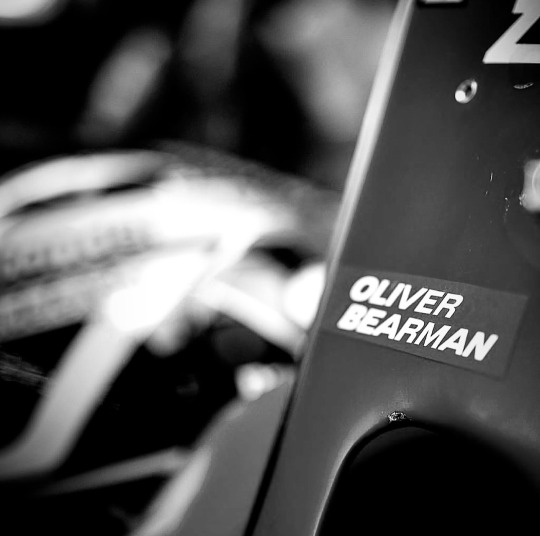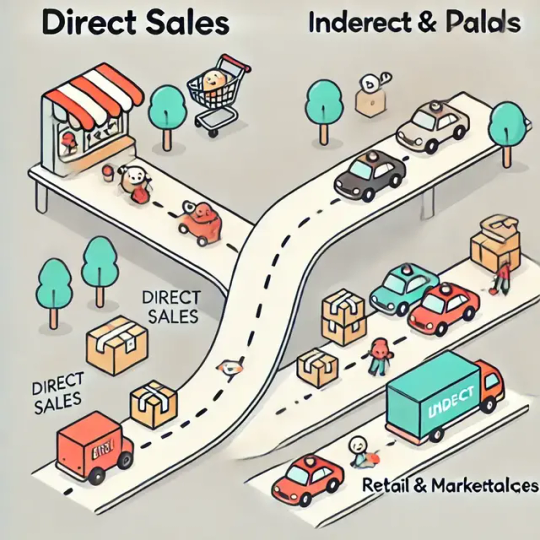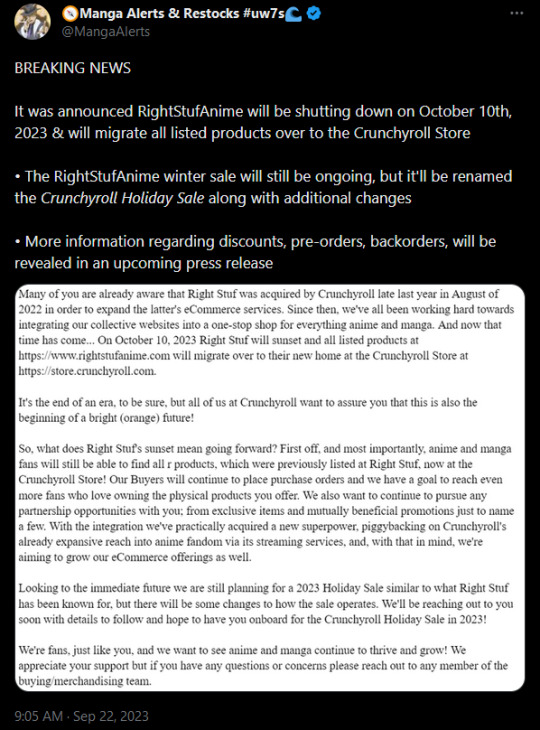#ecommerce-distribution
Explore tagged Tumblr posts
Text
We are delighted to announce our fulfilment and packaging partnership with @olliebearman.
Ollie is a British racing driver who made an incredible Formula One debut for Ferrari in the 2024 Saudi Arabian Grand Prix, substituting for Carlos Sainz Jr.
Subsequently, Ollie has signed a contract with Haas and he is set to make a full-season debut in 2025 on a multi-year deal.




#distribution#order fulfilment#warehousing#ecommerce#mensfashion#ollie bearman#worldwide shipping#shipping#apparel#fulfilment partner#pick and pack#reverselogistics#3pl logistics#3plserviceprovider#3pl warehouse services#customer service#inventory management#f1#dropshipping#success#continuous improvement#warehouse#logistics#exporting#importing#same day delivery#next day delivery#packaging#e commerce#storage
3 notes
·
View notes
Text
Luxury Brand Dropship: low risk and high-profit potential
The luxury brand dropshipping business model is transforming the e-commerce landscape that allows entrepreneurs to sell high-end products with minimal investment and no inventory management burdens. As the demand for luxury goods continues to rise in the online shopping era, dropshipping offers a unique opportunity for businesses to leverage established luxury brands and reach a global audience without the complexities of traditional retail.
Luxury brand dropshipping enables sellers to offer prestigious and exclusive items without stocking physical inventory. Instead, sellers partner with suppliers who handle storage, packaging, and direct shipping to customers. This model is ideal for entrepreneurs who want to enter the high-end fashion, jewelry, and beauty industries with low risk and high-profit potential. Luxury Distribution is a cutting-edge luxury brand dropship service. It offers a low-risk and high-reward opportunity for entrepreneurs to enter the booming luxury e-commerce market.

Key Features of Luxury Distribution
Extensive Product Catalog - Access to a diverse range of luxury products, including designer clothing, footwear, handbags, watches, jewelry, cosmetics, and perfumes.
User-Friendly B2B Live Catalog - A dynamic catalog with real-time product availability ensures seamless browsing. There will be no minimum order requirements, making it easy for new sellers to start.
Seamless E-Commerce Integrations - Fully compatible with major platforms like Shopify, WooCommerce, and other leading e-commerce solutions for smooth, hassle-free operations.
Global Network of Retailers - Founded in Milan, it is revolutionizing the B2B2C fashion technology space, connecting a vast network of suppliers, retailers, and online marketplaces.
Simplified Inventory & Order Management - Sellers don’t have to worry about storage, packaging, or shipping logistics. The supplier handles fulfillment, allowing sellers to focus on growing their business.
How the Luxury Brand Dropshipping Order Fulfillment Works
Luxury brand dropshipping follows a straightforward and efficient process-
Customers Browse & Select Products – The online store showcases a curated collection of luxury items to attract high-end shoppers.
Customers Place Orders – Buyers select their desired items and complete their purchase on the seller’s website.
Order is sent to Supplier – The online store forwards order details directly to the supplier.
Supplier Prepares & Ships the Product – The supplier packs and ships the product directly to the customer, ensuring fast and secure delivery.
Customers Receive Shipping Updates – The store keeps customers informed about order tracking and delivery updates, enhancing transparency and trust.
Luxury Distribution, an advanced luxury brand dropship provides a seamless and scalable solution for sellers who want to tap into the prestige and profitability of high-end brands without inventory challenges.
Traditional luxury retail requires substantial capital investment in inventory. However, dropshipping allows entrepreneurs to launch a luxury store with minimal upfront costs.
The luxury goods industry is expanding rapidly, driven by digital transformation and changing consumer behavior. Dropshipping enables sellers to capitalize on this trend without the risks of overstocking or unsold inventory.
Global Market Reach is not limited to a single geographic location. Through online platforms, entrepreneurs can connect with international buyers, expanding their market reach beyond local customers.
#luxury brand dropship#luxury brand dropshipping#dropshipping luxury products#high end product dropshipping#premium brand dropshipping#dropshipping luxury fashion#luxury goods dropshipping suppliers#luxury brand ecommerce#dropshipping luxury accessories#luxury distribution fashion wholesale suppliers#luxury distribution milano#b2b wholesale luxury clothing#luxury distribution global supply
0 notes
Text

Optimizing Distribution Channels for Ecommerce: A CRO Perspective
Explore key strategies to optimize distribution channels for ecommerce success and improve conversion rates.
Source: https://cro.media/insights/strategies/optimizing-ecommerce-distribution-channels/
For ecommerce businesses, mastering distribution channels is not only about getting products from point A to point B—it’s about optimizing the entire sales journey to maximize conversions. As companies evolve and expand, understanding how distribution channels impact user experience, pricing, and customer loyalty becomes essential. From a Conversion Rate Optimization (CRO) perspective, selecting and managing these channels strategically can significantly improve conversion rates and overall business performance. This entire sentence about CRO and business performance
Impact of Distribution Channels on Conversion Rates
The distribution channel you choose directly affects the buying process and user experience, which in turn influences conversion rates. A well-optimized distribution channel ensures that customers can quickly and easily purchase the product, leading to higher conversion rates. The two primary types of channels—direct and indirect—offer different benefits that should be carefully considered in your CRO strategy.
Direct Distribution Channel: Simplifying the Path to Purchase
A direct distribution channel eliminates intermediaries, allowing the manufacturer to sell directly to the customer. This approach has several advantages from a CRO perspective:
Reduced Complexity: Fewer steps in the purchase process mean fewer opportunities for friction. By selling directly through your ecommerce site, customers are less likely to drop off during the buying process.
Pricing Control: Direct sales allow for better pricing flexibility, which can be crucial in optimizing for different customer segments. Lower prices can be an attractive conversion driver, but be mindful of pricing strategies that align with customer expectations.
Customer Data: Direct interaction with customers enables the collection of valuable data, which can be used to optimize the customer journey. By understanding behavior patterns, you can personalize offers and product recommendations, which boosts conversion rates.
In CRO, the direct channel is often seen as the most optimal for businesses just starting out or those looking to maintain tight control over their marketing and sales process.
Indirect Distribution Channel: Expanding Reach for Higher Conversions
Indirect channels involve intermediaries such as wholesalers, retailers, or online marketplaces, creating a more complex path to the consumer. While this might add layers to the sales process, it can still be effective for increasing conversions, especially in certain markets.
Broader Reach: For companies selling products in industries with large customer bases or niche markets, indirect channels can offer exposure that might be unattainable through direct sales alone. For instance, selling through large retail chains or online platforms like Amazon can significantly increase product visibility, leading to more conversions. This entire sentence about selling through large retail chains
Trust and Convenience: Consumers may feel more comfortable purchasing from established retailers or platforms where they have existing accounts and trust. This reduces friction in the decision-making process, ultimately boosting conversion rates.
Multi-channel Strategy: By adopting a multi-channel approach, businesses can provide customers with various purchase options, catering to their preferences. A strong, consistent brand presence across multiple channels, whether online or offline, can further increase trust and drive conversions.
Pricing Strategy and its CRO Impact
The choice of distribution channel has a direct influence on your pricing strategy, which is a key CRO lever. Indirect channels require price adjustments to account for the margins of intermediaries, which can make your product more expensive for consumers.
Price Sensitivity: While direct channels can offer lower prices due to the elimination of middlemen, indirect channels typically require higher prices to maintain profitability for all parties involved. It's crucial to assess the price sensitivity of your target audience when making these decisions. For instance, luxury goods may not see as much impact from higher prices, but everyday consumer products might experience higher drop-off rates if priced too high.
Price Transparency: Offering the same product through multiple channels at different price points can create confusion and reduce trust, which negatively affects conversions. To prevent this, companies should maintain consistent pricing or ensure that any price variation is clearly justified by added value, such as convenience or exclusive offers.
Leveraging CRO Tools for Channel Optimization
To maximize conversions across different distribution channels, ecommerce businesses must continuously test and optimize. Here are some key CRO strategies for distribution channel optimization:
A/B Testing: Whether it's testing product pages, checkout flows, or pricing strategies, A/B testing allows businesses to determine which channel works best for driving conversions. Testing different messaging and incentives across direct and indirect channels helps uncover what resonates with customers.
User Behavior Analysis: Understanding how users behave across various touchpoints is essential in CRO. Analytics tools can track where customers drop off in the sales funnel and which distribution channel leads to the highest engagement and conversion rates.
Mobile Optimization: As mobile shopping continues to rise, ensuring that your distribution channels are optimized for mobile users is crucial for improving conversions. This includes having mobile-friendly websites, apps, and seamless purchasing options on platforms like Amazon or Shopify. This entire sentence about mobile optimization
"A well-optimized distribution channel ensures that customers can quickly and easily purchase the product, leading to higher conversion rates."
Long-term CRO Strategy: Adapting as Your Business Grows
A key takeaway for ecommerce businesses is that distribution channel strategies should evolve as the company grows. Start with direct channels to maintain control and optimize the user journey, but remain open to exploring indirect options as your brand expands. A hybrid approach, combining both direct and indirect channels, can be effective in reaching broader markets while keeping a personalized touch where needed. This entire sentence about a hybrid approach
Furthermore, optimizing your distribution strategy over time requires careful monitoring of conversion metrics. By using CRO tools like heatmaps, session replays, and customer surveys, you can refine the customer experience on each channel and continue to increase your conversion rates as market dynamics shift.
The Role of CRO in Distribution Channel Success
Ultimately, your choice of distribution channel will affect both the cost and experience associated with a product’s purchase. To succeed in ecommerce, it’s vital to treat distribution channel management as a dynamic element of your broader CRO strategy. By continuously optimizing your distribution channels based on customer behavior, market trends, and data-driven insights, you can boost conversions and grow your ecommerce business more effectively. This entire sentence about optimizing distribution channels
"To succeed in ecommerce, it’s vital to treat distribution channel management as a dynamic element of your broader CRO strategy."
0 notes
Link
0 notes
Text
Food Warehouse Services | L&M

Our food warehouse services provide comprehensive storage solutions designed to meet the stringent requirements of food safety and quality. We offer a dedicated facility that ensures your food products are stored in optimal conditions to maintain freshness and integrity. From temperature-controlled environments to efficient inventory management, our services are tailored to support your food storage needs. With our commitment to safety and reliability, you can trust us to handle your food products with the utmost care. Get in touch to learn more about our food warehousing solutions.
#Food warehouse services#Seamless eCommerce integrations#Food warehouse and distribution#Logistic and warehouse services
0 notes
Text
6 Ways eCommerce Platforms Simplify B2B Distribution

Imagine navigating the complexities of B2B distribution with ease and efficiency—this is the promise of modern B2B eCommerce platforms. The rise of B2B eCommerce platforms has emerged as a game-changer, offering a strategic advantage in an increasingly competitive landscape. These platforms are more than just a means to facilitate online sales; they are comprehensive ecosystems designed to streamline operations, enhance customer interactions, and consolidate multiple storefronts into a unified, efficient system. Embracing a B2B eCommerce platform is not just about keeping up with the times—it's about redefining the future of B2B distribution. Let's delve into how these platforms are empowering distributors to transform their business operations and achieve unparalleled success.
1. Centralized Product Management
One of the biggest challenges for B2B distributors is managing a vast array of products across multiple storefronts. B2B eCommerce platforms provide a centralized system where distributors can manage all their products in one place. This means they can easily update product information, adjust pricing, and manage inventory without the hassle of dealing with multiple systems. By centralizing product management, distributors can ensure consistency across all their storefronts, making it easier for customers to find what they need and trust the information they see.
2. Streamlined Order Processing
Order processing can be a time-consuming and error-prone task, especially when dealing with multiple storefronts. B2B eCommerce platforms streamline this process by integrating all orders into a single system. This allows distributors to quickly and efficiently process orders, reducing the likelihood of errors and delays. With all orders centralized, distributors can also gain better insights into their sales trends and customer preferences, enabling them to make more informed business decisions.
3. Enhanced Customer Experience
In the B2B world, providing a seamless and personalized customer experience is crucial. B2B eCommerce platforms enable distributors to offer a consistent experience across all their storefronts. Customers can easily navigate the site, find the products they need, and place orders without any hassle. Additionally, these platforms often come with features such as customer-specific pricing, personalized product recommendations, and easy reordering options, all of which contribute to a better customer experience. When customers have a positive and consistent experience, they are more likely to return and build a long-term relationship with the distributor.
4. Improved Data Integration and Analytics
Data is the backbone of any successful business strategy. B2B eCommerce platforms provide robust data integration and analytics tools that allow distributors to consolidate their storefronts and gain a comprehensive view of their business. These tools can integrate with existing ERP and CRM systems, ensuring that all data is up-to-date and accurate. Distributors can analyze this data to understand customer behavior, identify sales trends, and make data-driven decisions that drive growth. With improved data integration and analytics, distributors can operate more efficiently and stay ahead of the competition.
5. Scalability and Flexibility
As businesses grow, their needs change. B2B eCommerce platforms are designed to be scalable and flexible, allowing distributors to easily expand their operations without the need for significant investments in new infrastructure. Whether a distributor wants to add new product lines, enter new markets, or integrate with new sales channels, a robust eCommerce platform can support these changes seamlessly. This scalability and flexibility enable distributors to consolidate their storefronts while also positioning themselves for future growth.
6. Cost Efficiency
Managing multiple storefronts can be expensive, with costs associated with maintaining separate websites, systems, and staff. B2B eCommerce platforms offer a cost-effective solution by consolidating these operations into a single platform. This not only reduces the need for redundant systems and personnel but also lowers the overall cost of managing the business. Additionally, with automated processes and improved efficiency, distributors can save time and resources, allowing them to focus on more strategic initiatives that drive growth.
B2B eCommerce platforms are invaluable tools for distributors looking to consolidate their storefronts and streamline their operations. As the digital landscape continues to evolve, embracing a robust B2B eCommerce platform will be key to staying competitive and meeting the ever-changing needs of customers. Whether you’re a small distributor just starting out or a large enterprise looking to optimize your operations, a B2B eCommerce platform can help you achieve your business goals and drive long-term success.
Our Software Services:
Quotation Software | Sales Order Management Software | Purchase Order Management Software | Invoicing Software | Pick Pack Ship Software | Payment Processing Software
#distribution software#b2b ecommerce#b2b lead generation#b2b marketing#bmobile route software#bmobileroutesoftware#united states#ecommerce platform
0 notes
Text
#business#commercial#entrepreneur#economy#ecommerce#antimicrobial#restaurant#interior design#distribution#savings#startup
0 notes
Text

We are working with H.N White. H.N. White offers a curated selection of handmade ties, overshirts, knitwear and accessories for men. H.N. White ties are handmade in England from the finest fabrics.
#distribution#warehousing#order fulfilment#mensfashion#ecommerce#worldwide shipping#storage#logistics#reverselogistics#pick and pack#mensaccessories#b2c#b2b#exporting#brexit#luxury retail#retail#fulfilment partner#fulfilment house
3 notes
·
View notes
Text
Luxury Brand Dropship Solutions: How Luxury Distribution is Revolutionizing the E-Commerce Space
The world of e-commerce has experienced significant growth over the past decade, and one of the most remarkable trends to emerge has been the rise of dropshipping. This business model allows entrepreneurs to sell products online without needing to keep inventory or handle shipping themselves. As the demand for high-end products increases, luxury brands are now turning to dropshipping solutions to meet the needs of their customers. One such provider of luxury brand dropship solutions is Luxury Distribution, a company that is transforming the way luxury goods are delivered to consumers.
The Growing Demand for Luxury Brand Dropshipping
With the increasing number of consumers looking for exclusive and high-quality items, the market for luxury products is flourishing. This shift has made luxury brands eager to tap into the online shopping space. However, many high-end brands face challenges when it comes to distributing their products while maintaining the exclusivity and prestige of their products. Luxury brands often rely on limited distribution channels, ensuring that their products only reach the most discerning customers.
The Role of Luxury Distribution in the Dropshipping Industry
Luxury Distribution stands out in the dropshipping space by offering exclusive, high-quality services tailored to luxury brands. This supplier specializes in high-end products, including fashion, accessories, and fine jewelry, ensuring that every item meets the highest standards. Their luxury brand dropship solutions are designed to help businesses sell these premium products without having to deal with the logistical challenges of managing inventory, shipping, or returns.

What makes Luxury Distribution unique is their deep understanding of the luxury market. They recognize the importance of brand integrity and customer experience, which are often compromised in the traditional dropshipping model. As a result, Luxury Distribution offers a comprehensive service that maintains a luxury brand’s high standards, ensuring that every product is shipped directly from the manufacturer to the customer, in pristine condition, and with packaging that reflects the brand’s prestige.
Benefits of Luxury Brand Dropship Solutions
Luxury brand dropship solutions offer numerous advantages for businesses in the luxury sector. For one, it eliminates the need for significant upfront investment in inventory and storage. This allows businesses to focus on marketing, building their online presence, and growing their customer base, while leaving the logistics to the experts at Luxury Distribution.
Another benefit is the ability to reach customers globally. Since the products are shipped directly from the supplier, businesses can offer their goods to customers worldwide without worrying about geographical limitations or expensive international shipping fees. This opens up new revenue streams and opportunities for growth in markets that may have previously been out of reach.
Conclusion
Luxury Distribution’s luxury brand dropship solutions provide an invaluable service for businesses looking to expand their presence in the online market. With their expertise in luxury goods and commitment to maintaining brand integrity, Luxury Distribution is helping high-end brands thrive in the ever-evolving e-commerce landscape.
#luxury brand dropship#luxury dropshipping#luxury brand ecommerce#dropshipping high end products#premium brand dropshipping#luxury goods dropship suppliers#luxury dropshipping stores#dropshipping designer brands#luxury distribution global supply#luxury distribution milano#luxury product fulfillment#dropshipping high end merchandise#brand partnerships for dropshipping#dropshipping luxury apparel#luxury dropshipping platform
1 note
·
View note
Link
Expanding Horizons: New Marketplaces and Distribution Channels for E-Commerce Success
The world of ecommerce continues to evolve, presenting businesses with exciting opportunities to expand their reach and tap into new customer segments. With the emergence of new marketplaces and distribution channels, entrepreneurs and retailers have the chance to explore untapped markets, enhance brand visibility, and drive revenue growth. This article explores the significance of embracing new marketplaces and distribution channels for ecommerce success, highlighting key strategies to leverage these platforms effectively.
#ecommerce#ecommerce operations#ecommerce distribution#web developers#web developing company#web development#distribution channels#marketplaces#ecommerce marketplaces#tech#tech news#tech trends#b2c#b2b#online shopping#website#technology#technology news#technology trends
0 notes
Text
What Is End To End Logistics & Supply Chain Solutions?
In today's rapidly evolving and highly competitive business landscape, companies understand the critical role that efficient supply chain management plays in gaining a competitive edge. Among the various approaches available, one that has gained significant attention is the implementation of end-to-end logistics and supply chain solutions. These comprehensive solutions cover the entire spectrum of the supply chain process, starting from raw material sourcing all the way to the final product delivery. The primary objective of these solutions is to optimize operational efficiency, drive cost reduction, and enhance customer satisfaction. In this blog, we will take a deep dive into the concept of end-to-end logistics and supply chain solutions, shedding light on its definition, key components, benefits, and effective implementation strategies. By exploring these aspects, businesses can gain valuable insights into how they can leverage end-to-end solutions to elevate their supply chain management practices and achieve sustainable success in today's dynamic marketplace.
Definition of End-to-End Logistics & Supply Chain Solutions
End-to-end logistics and supply chain solutions encompass the comprehensive integration and management of all activities involved in the supply chain process, from procurement to distribution. This holistic approach covers a wide range of functions, including procurement, production, inventory management, transportation, warehousing, and customer service. The overarching goal is to optimize the flow of goods, information, and funds throughout the supply chain, ensuring smooth coordination and collaboration among all stakeholders. By leveraging advanced technologies and strategic planning, businesses can achieve end-to-end visibility, transparency, and control over their supply chain operations.
This allows for better demand forecasting, improved inventory management, efficient order fulfillment, reduced lead times, and enhanced customer service. Moreover, end-to-end solutions enable businesses to identify bottlenecks, streamline processes, mitigate risks, and seize opportunities for cost savings and operational efficiencies. Ultimately, implementing end-to-end logistics and supply chain solutions empowers businesses to gain a competitive advantage by delivering products to customers faster, more reliably, and with greater customer satisfaction.
Key Components of End-to-End Logistics & Supply Chain Solutions
To fully understand end-to-end logistics and supply chain solutions, it is essential to explore the key components that make up this comprehensive approach. These components encompass critical aspects of the supply chain. Let's dive deeper into each of these components and their significance in optimizing the supply chain process. The list of the components of end to end logistics and supply chain solution is as follows:
Supply Chain Capacity Planning
Capacity planning involves analyzing and determining the resources, including production capabilities, warehouse space, and transportation capacity, required to meet demand effectively. By accurately forecasting demand and aligning it with available resources, companies can optimize their supply chain capacity and avoid bottlenecks or excess capacity.
Supply Chain Orchestration
Supply chain orchestration focuses on synchronizing and coordinating activities across different functions and entities within the supply chain. It involves real-time visibility, communication, and collaboration among suppliers, manufacturers, distributors, and retailers to ensure efficient order fulfillment and timely delivery.
Order Orchestration
Order orchestration refers to the process of managing and optimizing customer orders throughout the supply chain. It involves capturing, processing, and tracking orders, ensuring that they are fulfilled accurately and delivered on time. Order orchestration also includes managing order changes, cancellations, and returns.
RFID Warehouse Management System
RFID (Radio Frequency Identification) technology plays a crucial role in enhancing warehouse management and inventory tracking. RFID tags are attached to products or packaging, allowing for real-time identification, tracking, and monitoring of inventory. This technology improves inventory accuracy, reduces manual errors, and enables efficient order fulfillment.
F&B Supply Chain
The food and beverage (F&B) industry has unique supply chain challenges, including perishable products, stringent regulations, and complex distribution networks. End-to-end logistics and supply chain solutions for the F&B industry focus on maintaining product quality, ensuring compliance, optimizing inventory, and minimizing waste.
RFID Inventory Management
RFID technology enables efficient inventory management by providing real-time visibility into inventory levels, location, and movement. RFID tags and readers automate the tracking and monitoring of inventory, minimizing manual efforts and improving inventory accuracy. This technology also facilitates efficient stock replenishment, reduces stockouts, and enhances overall inventory control.
Fulfillment Center vs Distribution Center
While often used interchangeably, fulfillment centers and distribution centers serve different purposes in the supply chain. A fulfillment center is a facility dedicated to e-commerce order fulfillment, involving activities such as picking, packing, and shipping. On the other hand, a distribution center focuses on receiving, storing, and redistributing products to retail locations or other distribution centers.
Ecommerce Fulfillment Services India
India's booming e-commerce market has led to the emergence of specialized fulfillment service providers. These companies offer end-to-end fulfillment solutions, including warehousing, order processing, inventory management, and last-mile delivery, catering to the unique needs of e-commerce businesses in India.
Benefits of End-to-End Logistics & Supply Chain Solutions
Implementing end-to-end logistics and supply chain solutions offers several benefits for businesses. By streamlining and integrating various supply chain processes, companies can enhance operational efficiency, reduce costs, improve customer satisfaction, and gain a competitive edge in the market. Let's explore the list of significant advantages that businesses can derive from adopting end-to-end logistics and supply chain solutions:
Improved Efficiency
By streamlining processes, optimizing inventory levels, and enhancing coordination among supply chain partners, end-to-end solutions improve overall operational efficiency. This leads to reduced lead times, faster order fulfillment, and improved customer satisfaction.
Cost Reduction
Effective supply chain management helps identify cost-saving opportunities, such as optimizing transportation routes, reducing inventory holding costs, and minimizing stock outs or overstock situations. By eliminating inefficiencies and enhancing resource utilization, businesses can achieve significant cost reductions.
Enhanced Customer Service
End-to-end solutions enable better visibility and control over the supply chain, resulting in improved customer service. Companies can provide accurate order tracking, faster delivery, and proactive communication, meeting customer expectations and building long-term loyalty.
Agility and Flexibility
End-to-end solutions empower businesses to respond quickly to changing market demands and unforeseen disruptions. With better visibility and coordination, companies can adapt their supply chain processes, reroute shipments, and manage inventory effectively to minimize the impact of disruptions and maintain a competitive edge.
Competitive Advantage
By optimizing the entire supply chain, businesses gain a competitive advantage in the market. Efficient supply chain management enables cost leadership, faster time-to-market, and the ability to meet customer demands promptly, setting businesses apart from their competitors.
Implementing End-to-End Logistics & Supply Chain Solutions
To implement end-to-end logistics and supply chain solutions effectively, businesses should consider the following steps:
Assess Current Supply Chain- Conduct a comprehensive analysis of the existing supply chain processes, identifying bottlenecks, inefficiencies, and areas for improvement.
Collaborate with Partners- Establish strong relationships and collaboration with suppliers, manufacturers, distributors, and other supply chain partners to ensure seamless coordination and information sharing.
Invest in Technology- Leverage advanced technologies such as supply chain management software, RFID systems, and analytics tools to enable real-time visibility, data-driven decision-making, and process automation.
Continuous Improvement- Implement a culture of continuous improvement, regularly evaluating performance metrics, monitoring market trends, and making necessary adjustments to optimize supply chain operations.
Partner with Experts- Consider partnering with experienced logistics and supply chain service providers who specialize in end-to-end solutions. These experts can bring in-depth industry knowledge, expertise, and resources to drive efficient and effective supply chain management.
Conclusion
In conclusion, adopting end-to-end logistics and supply chain solutions is a strategic move for businesses seeking to optimize their operations, enhance customer satisfaction, and gain a competitive advantage. By integrating key components such as supply chain capacity planning, supply chain orchestration, order orchestration, and RFID warehouse management systems, companies can achieve improved efficiency, cost reduction, and enhanced customer service. This is particularly relevant in specialized industries like F&B, where tailored solutions are essential. With the support of experienced partners like AWL, businesses can navigate the complexities of implementing end-to-end solutions and leverage their expertise to drive success in today's dynamic and competitive business environment. By embracing end-to-end logistics and supply chain solutions, companies can transform their supply chain processes and position themselves for long-term growth and sustainability.
Source : https://www.awlindia.com/us-en/blog-details/what-is-end-to-end-logistics-supply-chain-solutions
#supply chain capacity planning#supply chain orchestration#order orchestration#rfid warehouse management system#f&b supply chain#fulfillment center vs distribution center#ecommerce fulfillment services India#rfid inventory management
0 notes
Text
youtube
Buyist Pro can assist in tracking team activities, monitoring website changes, managing user access, and identifying potential security risks. Our AI program aims to streamline team management for distributed workforces, providing quick and easy access to crucial information about your eCommerce platform and team activities.
Buyist Pro, an AI-powered tool designed to help e-commerce businesses manage their complex operations more efficiently.
CHAPTERS 0:00 intro 1:03 Managing a Team With AI 1:37 eCommerce security 2:26 Using Buyist Pro to Manage Your Team
21 notes
·
View notes
Text

Many of you are already aware that Right Stuf was acquired by Crunchyroll late last year in August of 2022 in order to expand the latter's eCommerce services. Since then, we've all been wroking hard towards integrating our collective websites into a one-stop shop for everything anime and manga. And now that time has come... On October 10, 2023 Right Stuf will sunset and all listed products at https://www.rightstufanime.com will migrate over to their new home at the Crunchyroll Store at https://store.crunchyroll.com. It's the end of an era, to be sure, but all of us at Crunchyroll want to assure you that this is also the beginning of a bright (orange) future! So, what does Right Stuf's sunset mean going forward? First off, and most importantly, anime and manga fans will still be able to find all r (sp?) products, which were previously listed at Right Stuf, now at the Crunchyroll Store! Our Buyers will continue to place purchase orders and we have a goal to reach even more fans who love owning the physical products you offer. We also want to continue to pursue and partnership opportunities with you; from exclusive items and mutually beneficial promotions just to name a few. With the integration we've practically acquired a new superpower, piggybacking on Crunchyroll's already expansive reach into anime fandom via its streaming services, and, with that in mind, we're aiming to grow our eCommerce offerings as well. Looking to the immediate future we are still planning for a 2023 Holiday Sale similar to what Right Stuf has been known for, but there will be some changes to how the sale operates. We'll be reaching out to you soon with details to follow and hope to have you onboard for the Crunchyroll Holiday Sale in 2023! We're fans, just like you, and we want to see anime and manga continue to thrive and grow! We appreciate your support but if you have any questions or concerns please reach out to any member of the buying/merchandising team.
I have said it so many times before but I need to urge everyone now, when it's on the precipice of being too late, if you have any internationally (primarily Japanese) licensed media you want to own forever, now is the time to do it. Sony, via Crunchyroll, owns a worryingly large share of the anime and manga distribution market, both digital and physical, and the more they own, the worse it's going to be for consumers. It's going to be even more worse in the event Crunchyroll fucks something up, like how The Embracer Group bought up all those video game developers, then a single deal fell through and now they and everything they bought might be on death's door. When it comes to corporate consolidation and monopolies, consumers will lose one way or another.
If you can support official releases of things you love, please do so to ensure that you will always have access to it. And- failing that- never forget that piracy is always a valid option.
70 notes
·
View notes
Text
oh btw its worldbuilding wednesday so im gonna whip out the cyberpunk characters and include some corporations and factions. please feel free to ask questions about anything. pitch a corporation or faction or something. send a name you think would be cool for a cyberpunk character. go nuts.
the setting is new miami: A seaside port city in florida that is losing ground to the rising sea levels. Densely populated with a large Caribbean diaspora that mostly handles transport and delivery (nomads)
character list (so far) here
corps and factions
the promethean collective: they distribute jailbroken cybernetics. activist/hacktivist group.
eagle & co group of businesses:
argos inc (part of e&co): surveillance and security solutions. "keep a hundred eyes on the prize"
theseus (part of e&co): cybernetics company. "building a better you"
horner media group: entertainment company. they have subsidiaries like labels and imprints and production studios and stuff but i havent settled on any yet
drake co: department store and ecommerce platform (walmart meets amazon). 'find your treasure' they have an alexa type holographic assistance called annette (this is relevant to one of my players)
i need to come up with a bunch of organized crime gangs as well. feel free to send a cool or funny concept/gimmick for one.
9 notes
·
View notes
Note
Weird question, did "batch delivery to carrier" show up on your tracking for Loop? Mine has been stuck at that step for a week now and I'm starting to think they lost it, was curious how long that lasted for other people
here's a portion of my tracking:
Port of destination - Arrival - Nov 25 2024 09:44 am
International shipment release - Import - Nov 25 2024 12:25 pm
Batch delivery to carrier - Nov 26 2024 02:22 pm
PACKAGE RECEIVED AT DHL ECOMMERCE DISTRIBUTION CENTER - Nov 26 2024 11:18 pm
PROCESSED - Nov 26 2024 11:43 pm
DEPARTURE ORIGIN DHL ECOMMERCE FACILITY - Nov 27 2024 04:26 am
ARRIVAL DESTINATION DHL ECOMMERCE FACILITY - Nov 27 2024 05:01 pm
TENDERED TO DELIVERY SERVICE PROVIDER, ALLOW 1-3 DAYS FOR UPDATES FOR PACKAGES WITHIN THE US - Nov 27 2024 07:08 pm
so. maybe not looking good for you anon :(
3 notes
·
View notes